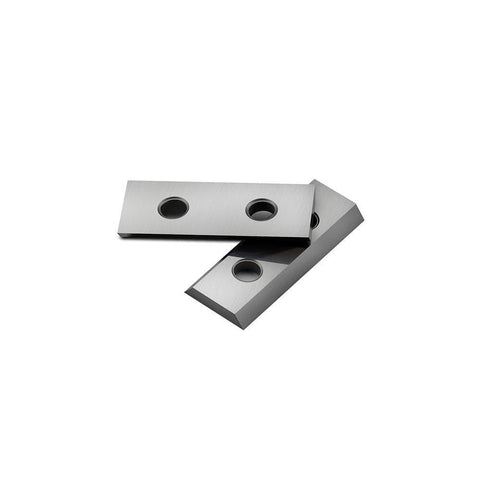
Unlocking Precision: A Deep Dive into Carbide Inserts for Machining Excellence
In the intricate world of machining, where precision and efficiency reign supreme, carbide insert stand as pivotal tools, shaping the industry's landscape. Their significance, however, is often understated, overshadowed by the complex machinery they complement. To truly appreciate these marvels, one must delve into the nuanced realm of carbide inserts, exploring their characteristics, applications, and the subtle interplay that defines their performance.
Carbide inserts, integral components in turning and milling operations, are crafted from a combination of tungsten carbide and cobalt. This blend yields a material with exceptional hardness and resistance to wear, ideal for cutting tools that must endure intense conditions. The unique properties of carbide inserts are largely dictated by their composition and the specific manufacturing processes they undergo. These inserts come in various grades and geometries, each designed to tackle different machining challenges.
One of the most critical aspects of selecting the right carbide insert is understanding its grade. The grade of an insert determines its hardness, toughness, and overall performance under various cutting conditions. For instance, inserts with a high cobalt content are generally tougher and more resilient, making them suitable for machining tough materials like stainless steel. Conversely, inserts with a higher tungsten carbide content excel in hardness and wear resistance, ideal for cutting harder materials such as high-speed steels.
Another pivotal factor is the geometry of the carbide inserts. The shape and design of an insert significantly influence its cutting capabilities and efficiency. Common geometries include the triangle, square, and round inserts, each catering to different machining needs. Triangular inserts, for example, are prized for their versatility and durability in turning applications. They often feature three cutting edges, providing extended tool life and the ability to handle varying depths of cut. Square inserts, on the other hand, offer stability and are frequently used in milling operations, where precision and consistent performance are paramount. Round inserts are celebrated for their robustness and are typically employed in heavy-duty machining tasks, where they can absorb high levels of shock and vibration.
The coating applied to carbide inserts also plays a significant role in their performance. Coatings such as titanium nitride (TiN), titanium carbonitride (TiCN), and aluminum oxide (Al2O3) enhance the insert's ability to withstand extreme temperatures and abrasive wear. TiN, for instance, provides a hard, lubricating surface that reduces friction and extends tool life. TiCN offers superior resistance to abrasive materials, making it ideal for cutting harder metals. Aluminum oxide coatings contribute to the insert's heat resistance, essential for high-speed cutting operations where temperatures can soar.
Choosing the right carbide insert involves a delicate balance between these various factors, each tailored to specific machining conditions and materials. Understanding the material properties of the workpiece, the type of machining operation, and the required precision helps in selecting the optimal insert. For example, machining aluminum often necessitates inserts with a special coating and geometry designed to handle the material's tendency to adhere to cutting tools. On the other hand, machining harder alloys might require inserts with enhanced toughness and wear resistance to maintain performance and extend tool life.
The interplay between these factors underscores the importance of a well-considered approach to selecting carbide inserts. A misstep in choosing the right insert can lead to decreased efficiency, increased tool wear, and suboptimal machining results. Therefore, it is essential for machinists and engineers to have a comprehensive understanding of the available options and their respective benefits. Manufacturers often provide detailed charts and recommendations, offering guidance on the optimal inserts for various materials and cutting conditions. These charts, rich with data on insert grades, geometries, and coatings, serve as invaluable resources in the decision-making process.
The advancement in carbide insert technology continues to push the boundaries of what's possible in machining. Innovations in material science and coating technologies contribute to the development of new insert formulations that promise even greater performance and durability. As industries demand higher precision and efficiency, carbide insert manufacturers are continually evolving their products to meet these needs. This dynamic field ensures that machinists have access to cutting-edge tools that enhance productivity and deliver exceptional results.
In summary, carbide inserts are more than just components of cutting tools; they are precision instruments engineered to meet the demands of modern machining. Their performance is influenced by a complex interplay of factors including grade, geometry, coating, and material properties. By understanding these elements and staying abreast of technological advancements, machinists can unlock new levels of efficiency and precision in their operations. As the industry continues to evolve, the role of carbide inserts remains central to achieving machining excellence, making them indispensable tools in the quest for perfection.
